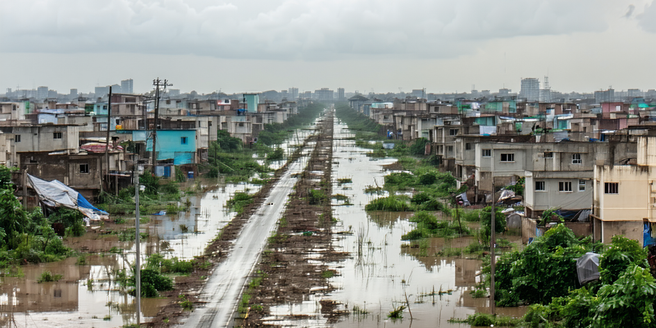
Understanding Vulnerabilities in At-Risk Areas
Understanding vulnerabilities is crucial for protecting at-risk areas from natural disasters. These regions often suffer from poor infrastructure, limited resources, and inadequate access to emergency services. Socioeconomic factors also play a significant role, as low-income communities may lack the means to invest in robust preparedness measures. Additionally, geographic and environmental considerations, such as proximity to coastlines, fault lines, or flood plains, determine the susceptibility of an area to specific types of disasters. Vulnerable populations, including the elderly, children, and the disabled, require special attention during planning and response efforts. By identifying and addressing these vulnerabilities, communities can enhance their resilience and reduce the impact of disasters. Successful preparedness involves collaboration between government authorities, non-profit organizations, and local residents to create effective strategies tailored to the unique challenges faced by each community.
Essential Emergency Supplies and Kits
Having essential emergency supplies and kits is vital for ensuring safety during natural disasters. Families should assemble a comprehensive disaster kit that includes non-perishable food, clean water, first-aid materials, personal hygiene items, and necessary medications. It is also important to have flashlights, batteries, a whistle, a multi-tool, and protective clothing. A battery-powered or hand-crank radio can keep families informed about weather updates and emergency instructions. Crucially, important documents should be kept safe and accessible, such as identification, insurance policies, and medical records. Tailoring kits for the specific needs of family members, including infants, elderly, and pets, is critical as well. Regularly checking and updating emergency kits ensures that supplies remain usable, and any perishable items are replaced in a timely manner. Preparation is key to minimize panic and ensure efficient evacuation when necessary.
Creating an Effective Communication Plan
Creating an effective communication plan is essential in disaster preparedness, particularly for vulnerable communities. This plan should outline how families and community members will stay in touch before, during, and after a disaster. Establishing a reliable chain of contact helps confirm the safety of loved ones and disseminate critical information. It is important to identify a family meeting point and designate an out-of-town contact to facilitate communication if local networks fail. Social media, messaging apps, and community alert systems can be harnessed to provide real-time updates. It is also crucial to engage with local authorities to understand available communication resources and protocols in place. Practicing the communication plan regularly ensures everyone knows their role and reduces confusion in times of crisis. Inclusivity is key, ensuring that people with disabilities or language barriers also have access to pertinent information.
Community Training and Capacity Building
Community training and capacity building are fundamental for effective disaster preparedness and resilience. Training programs should encompass first aid skills, emergency response techniques, and evacuation procedures, equipping residents to react confidently during disasters. Conducting regular workshops and drills keeps the community engaged and informed, fostering a culture of preparedness. Building local capacity involves collaboration with organizations that specialize in disaster management. Encouraging community members to volunteer for emergency roles enhances preparedness levels. Education is another crucial aspect, raising awareness about potential risks and the importance of readiness. Establishing local leadership or committees dedicated to disaster preparedness can streamline efforts, ensuring that practices evolve based on past experiences and insights. Empowering the community through training instills confidence, facilitates cooperative response efforts, and ultimately reduces the impact of disasters.
Mitigation Strategies to Reduce Impact
Implementing mitigation strategies lessens the impact of natural disasters on vulnerable communities. These strategies include structural measures such as elevating buildings in flood-prone areas, retrofitting infrastructures to withstand earthquakes, and constructing seawalls in coastal regions. Non-structural measures, such as developing land use plans and enforcing building codes, also play a significant role in disaster reduction. Community members should be educated about sustainable practices, such as water conservation and waste management, to minimize environmental degradation. Preserving natural buffers like wetlands and mangroves can reduce the effects of flooding and storm surges. Collaboration between governments, non-profit organizations, and local businesses ensures that mitigation strategies are effectively implemented. Proactive measures not only safeguard lives and property but also contribute to the community’s long-term resilience in the face of increasing climate-related challenges.
